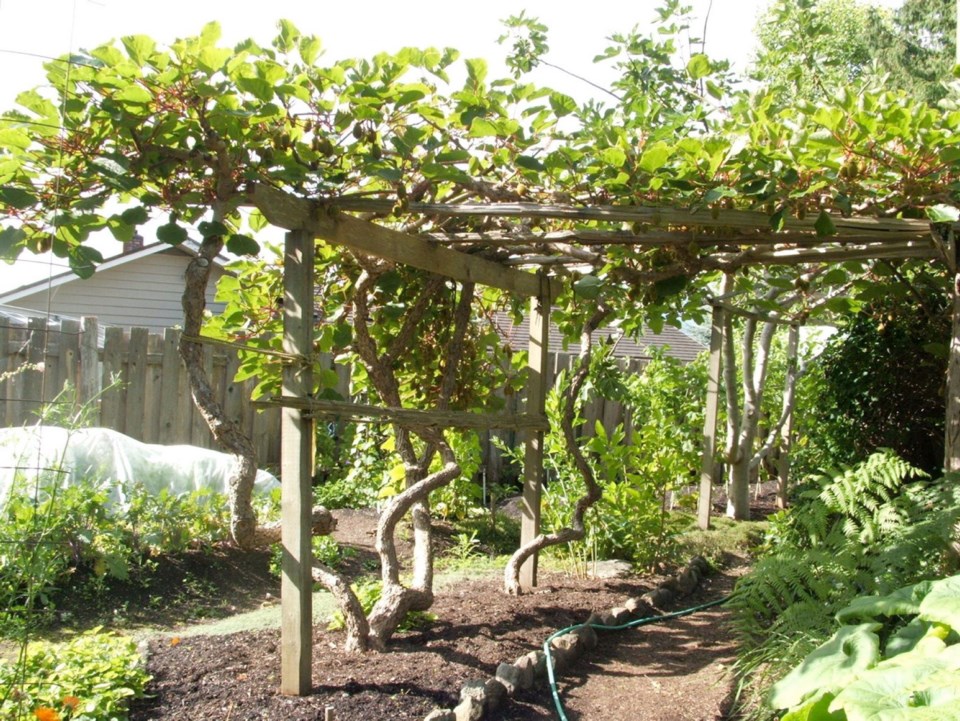Never before had I felt such warmth in January sunshine. In the late morning of Jan. 13, I strode eagerly up the gentle slope of my garden to its uppermost part — a broad, open area that was flooded in bright sunlight. This is where I grow most of my food plants.
On my way to the top of the back garden, I passed by a March blooming flowering plum tree and was astonished to notice that the flower buds were already a deep pink and looking ready to burst open.
The sun-warmed air was sweetly scented by the honey-like aroma of a long-established Sarcococca (Himalayan sweet box) shrub growing at one edge of the food garden, in the light shade of a climbing hydrangea and a ‘Mermaid’ climbing rose.
As I basked in the unseasonal but comforting warmth of the sun, and began shedding sweaters, an alarming thought struck. The kiwi vines! Better get pruning. The sap rises early in these vines and warm temperatures will only hasten the process.
Once sap is flowing actively, often in February, pruning cuts bleed badly. The same is true of grapevines, which also need pruning early in the year.
After being unable (forbidden, actually) to use a ladder for most of last year because of a knee injury, it was with almost manic glee that I climbed an orchard ladder to begin taming the vines that had become tangled and overgrown over almost a year of neglect.
I alternated the pruning with work on a pathway-widening and plot re-defining project next to the kiwis, thinking all the while about trying a few early seedings, perhaps of hardy greens (mizuna, arugula) and snow peas, and about preparing plots for earlier-than-usual sowings of carrots and for lettuce transplants to grow under plastic tunneling.
Forecasts I’ve been able to access predict continuing mild weather through January, but we still could get a burst of winter in February. Meanwhile, signs of early spring are everywhere.
Snow crocuses began opening a few flowers in late December. Some of last year’s calendula plants are bearing bright-orange blooms. Colchicum foliage is up and growing. The plants, produced from large corms, have outsized crocus-type flowers, without foliage, in late summer to around mid-autumn. Broad leaves appear in spring.
Comments on the weather abound, in my mail and everywhere I go. As I walked into a health food store one day early in the month, I was greeted by Jim, the store owner, with: “Are things popping up in your garden too?”
Often, when garden club representatives email information on a club meeting or special event, they offer thoughts on a column I’ve written or on what’s happening in their gardens.
On the same day that I was up a ladder pruning the kiwi vines, Roberta wrote with details of an upcoming club meeting in Nanaimo.
“Today is a lovely day to get out and see what bulbs and hellebores are coming into bloom,” she wrote. “Several things are early here, probably due to the mild winter. I’ve had enough scented violets in bloom since November to take little pots of them to an elderly ex-Brit friend who adores them. I got mine from my mother, who remembered them from her childhood in England. They make me think of her.
“Those tiny violets really are a wonder, aren’t they, filling a whole room with fragrance from just a few blooms. I have several Sarcococca shrubs now.
“They’re getting big enough to flower well and scent the garden, at least on a nice day. We first noticed their fragrance at Finnerty Gardens, where we had to search to find the source of this wonderful perfume so early in the year.”



